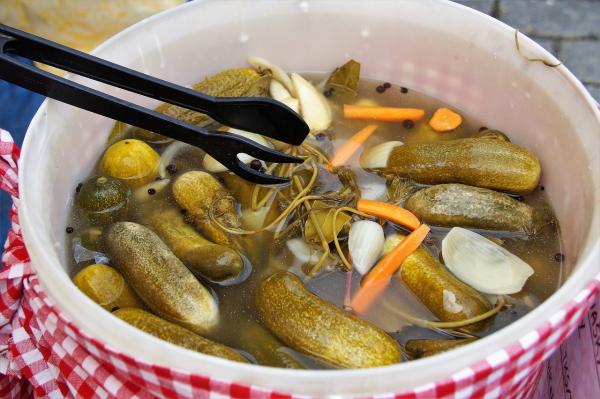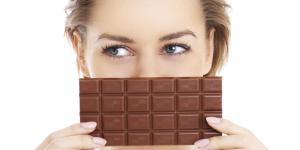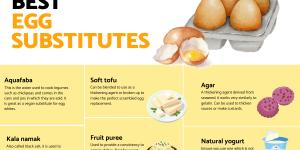Are Pickles Fattening? - Sweet and Sour Types


If you are thinking of improving your diet, pickled foods can be tricky. While they are often made from very health ingredients, the pickling process can add other ingredients which are not so good for you. In the case of gherkins which are made from healthy cucumbers, there are different types. While there are many different types of pickle, they can be divided into two main categories: sweet and sour. Most will have sweet and sour ingredients, but they ratio will be higher in one over the other.
At oneHOWTO, we help you understand what you can eat by asking are pickles fattening? Whether you want to lose weight for health or aesthetic reasons, answering the question can be a small way to improving your overall health.
Are pickles healthy for you?
Gherkins or pickled cucumbers are usually added to appetizers, salads, burgers or as the side to your favorite diner sandwich. While many people won't like them, they are a food which has many diehard fanatics. They might search out special types of pickle, use them in interesting ways or even try to make their own at home.
Since they use fresh vegetables, some people may think they will provide nutritional benefit. While they do have some nutrition, they are not a health food. The reason for this is the pickling process itself. To pickle, we can either use brine (in a process known as anaerobic fermentation) or by keeping them in an acid, usually vinegar. They will need to have an acidic pH level of lower than 4.6, otherwise bacteria can proliferate.
The brine contains high levels of salt which causes the pickles to become sour after the pickling process. Other processes are used to give different flavors and textures. For example, some pickles are first soaked in lime to give them extra crunchiness. For sweet pickles, the addition of sugar will create a sweet and sour pickle effect due to the retention of the brine.
High levels of salt and sugar are not good for a balanced diet, so it is not true they are healthy in themselves. However, as part of a balanced diet, you can still eat some pickles, as long as you don't eat too much and consume healthy foods concurrently.
Are pickles fattening?
The question of this article is not whether pickles are healthy, but whether they are fattening. To answer this question we need to focus on pickles which use vinegar. This is because combining vegetables with acid can help improve digestion, but also stimulate and speed up metabolism. This results in burning a greater number of calories, a process known as the citric acid cycle (or Krebs cycle).
As stated above, pickle types vary due to the fermentation process. Both sweet and sour pickles make harmful bacteria disappear, leaving only those that have positive metabolic effects. One such effect is the dissolution of fats or a more effective burning of calories. The acetic acid contained in vinegar actively helps the metabolization process of carbohydrates and fats, turning into adenosine triphosphate through which the accumulation of fat is avoided. This occurs because since it injects more energy into the cells and results in the acceleration of metabolism. It can also stimulate the functioning of other organs such as the liver and pancreas.
For all this, we can say that pickle do not make you fat. In fact, they may help you lose weight. However, they should be consumed in vinegar preserves and without other additives. Sweet pickles can use vinegar which provides some benefit, but the additional sugar can negate such benefits. Other additives in pickles can also be very bad for you.
How you eat the pickle is also very important. You cannot eat a double cheeseburger with bacon, place a pickle on top and consider it a healthy meal. Nor will the pickle counteract the negative properties of the burger itself. Eat them as part of a balanced diet in small quantities.
Calorie content of pickles
Now that you know a little more about the benefits and nutritional value of pickles, a food rich in vitamins and minerals, it is important to know the calorie content of this snack. One of the important things to consider is that this food is not eaten in large quantities, certainly not as much as we need to eat of non-pickled vegetables. We will usually only eat one or two pickles, although they can vary greatly in size.
In general, we should not consume more than 40-50 g of pickles in a day and they are not something we should eat most days. They should be a special snack once or twice a week. Since they are made up of 92% water on average, so their caloric content is very low at around 16 calories per 100 g. This will be greater for sweet pickles, but not considerably.
This means that a serving of pickles will be around 8 calories, making them a very low calorie food. However, as you will see below, there are other factors we need to consider in terms of nutrition.

Nutritional values of pickles
As we have previously pointed out, canned pickles can have a high nutritional value. They are low in calories and have a high water content. Here we look specifically at a standard sour pickle:
- Contain numerous vitamins (A, B3, E, C and folic acid or B9) and is considered a source of vitamin B6.
- Provide numerous minerals such as iron, calcium, phosphorus, potassium, magnesium and zinc.
- Are a good source of fiber.
- Have a high water content.
- Are a low-calorie food which has low fat levels.
Although pickles are an ideal snack for their nutritional value, you should be careful with one of their great disadvantages: their high sodium content. It is important to know that their high salt content makes them undesirable snacks for people with hypertension, a risk factor for cardiovascular diseases. Remember that the WHO recommends an intake of maximum 5 grams per day of salt and 100 grams of pickles contain 2.3 grams of sodium, so you should consume them in moderation.
If you want to read similar articles to Are Pickles Fattening? - Sweet and Sour Types, we recommend you visit our Food & drink category.





